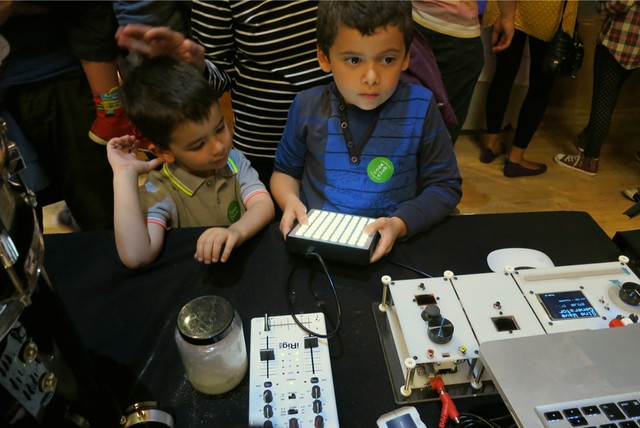The Whitney Modality
Documentation and details of The Whitney Modality, exhibited as part of WAYS TO ESCAPE_, 2022 NQ, Manchester, UK, 15th – 23rd March 2013.
Created with flickr slideshow.
WAYS TO ESCAPE_
http://www.waystoescape.org
this is a one week long exhibition exploring ways to escape our normal existence. asteroids bombard our planet, the ice is sliding down to hit us from the poles… all is not well with our world! we need ways to escape this precarious situation and see things from a different perspective. twelve artists explore the concept of escape and their personal *overview effect.
*the ‘overview effect’ that feeling of euphoria and profound contentedness experienced by astronauts looking back at the earth from space. although we all technically live in outer space, it takes the significant shift in point of view to realise the profundity of that truth. wiki/overview_effect
Lewis Sykes, ‘The Whitney Modality’, interactive installation.2013.
The work didn’t quite work up as originally conceived and listed on the exhibition website so this version is ‘updated’.
The Whitney Modality is a digital artwork that creates an immersive audiovisual experience – an inventive form of multi-sensory escapism. The viewer sits on a bean bag, dons a pair of high definition video goggles and holds a monome – a minimalist, ergonomic 64-button controller in their hands. By exploring the buttons and tilt of the monome they control the relative pitches of two raw, electronic tones which are linked directly to a hand-coded, real-time, dynamic animation based on an algorithm underpinning much of the work of computer-aided animator, John Whitney Sr.
Bio: Lewis Sykes is a veteran bass player of the underground dub-dance scene of the 90s. He performed and recorded with Emperor Sly, Original Hi-Fi and Radical Dance Faction and was a partner in Zip Dog Records. He honed an interest in mixed media through an MA in Hypermedia Studies at the University of Westminster in 2000 and continued to fuse music, visuals and technology through a series of creative collaborations – most notably as musician and performer with the progressive audiovisual collective The Sancho Plan (2005-2008) and most recently as one half of Monomatic – exploring sound and interaction through physical works that investigate rich musical traditions. Director of Cybersonica – an annual celebration of music, sound art and technology (2002-2011), Sykes was also Coordinator of the independent digital arts agency Cybersalon (2002-2007), founding artists-in-residence at the Science Museum’s Dana Centre. He is in the third year of a Practice as Research PhD at MIRIAD, Manchester Met, exploring the aesthetics of sound and vibration.
Additional notes…
The Whitney Modality is a next stage development of Lewis Sykes’s real-time, code-based audiovisual work, The Whitney System originally screened as part of Whitney Evolved at Kinetica Art Fair 2012 and repurposed especially for Escape_.
John Whitney Sr. is considered by many to be the godfather of modern motion graphics. ”Beginning in the 1960s, he created a series of extraordinary films of abstract animation that used computers to create a harmony – not of colour, space, or musical intervals, but of motion.” He championed an approach in which animation wasn’t a direct representation of music, but instead expressed a “complementarity” – a visual equivalence to the attractive and repulsive forces of consonant/dissonant patterns found within music. Whitney recognised that his work represented the infancy of an art form, but suggested that, “Composers will discover a congruence of aural-visual partnership… grounded on valid harmonic interrelationships equally applicable to sound and image.”
Extending Whitney’s ideas of a harmony between the senses the work investigates sensory modality – how we attain an awareness of the world around us by interpreting sensory information. Contemporary cognitive psychology research indicates that our senses aren’t distinct – they interact with and influence one another all the time. When we perceive images, sounds and other sensory information occurring coincidentally, either in space or in time, they are often bound together to form a multi-modal percept – a multi-sensory object of perception. Evolution has designed this innate process to take advantage of situations where the primary sense is somehow impaired (e.g. trying to follow a conversation in a noisy bar) by supplementing it using different senses to provide information on the same object (e.g. watching the speakers lips and facial expressions).
This begs intriguing questions about whether it is possible to link the senses together more closely by harnessing the innate way in which multi-modal sensory integration happens. Can this phenomenon be exploited for artistic purposes? Is it possible, with artistic intent, to manipulate a ‘multi-sensory object of perception’? If so, what will it be and how will it behave?
By linking sound and image in a direct and elementary way The Whitney Modality aims to create a sensory amalgam that engages the viewer in a subtlety shifted way – a synchronisation between the senses of sight and hearing that results in a ‘co-sensing’ of a ‘co-expressiveness’ – where the mind is not doing three separate things, it’s doing the same thing in two ways.
And a bedroom demo of the functionality on Vimeo:

